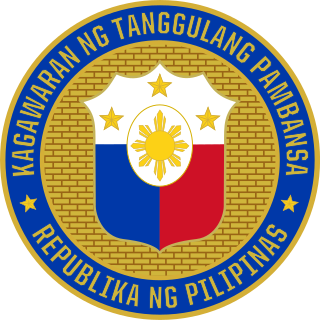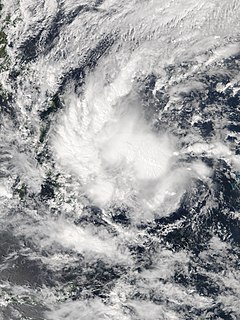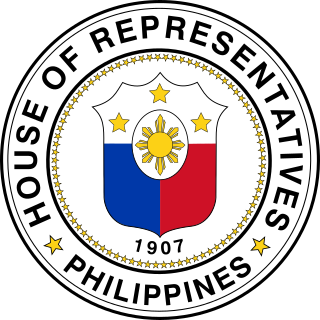An Office of Emergency Management (OEM), alternatively called an Emergency Management Office (EMO), or an Emergency Management Agency (EMA) in some areas, is an agency at the local, tribal, state, national or international level that holds responsibility of comprehensively planning for and responding to and recovering from all manner of disasters, whether man-made or natural. An OEM may also be requested to provide consequence management for large special events such as major gatherings, visiting dignitaries, etc.

Emergency management is the organization and management of the resources and responsibilities for dealing with all humanitarian aspects of emergencies. The aim is to reduce the harmful effects of all hazards, including disasters.
Mitigation is the reduction of something harmful or the reduction of its harmful effects. It may refer to measures taken to reduce the harmful effects of hazards that remain in potentia, or to manage harmful incidents that have already occurred. It is a stage or component of emergency management and of risk management.

The Department of National Defense is the executive department of the Philippine government responsible for guarding against external and internal threats to peace and security in the country. The Department of National Defense exercises executive supervision over the Armed Forces of the Philippines (AFP), the Office of Civil Defense (OCD), the Philippine Veterans Affairs Office (PVAO), the National Defense College of the Philippines (NDCP), the Government Arsenal (GA), and Veterans Memorial Medical Center (VMMC). It is also responsible for disaster preparation and management in the country.
State of calamity in the context of disaster management in the Philippines refers to a status that could be declared in the whole Philippines or the certain localities in the country in response to a destructive natural or man-made disaster. This measures allows the release of "calamity funds" allocated to local governments and control the pricing of basic commodities in the affected areas.

Disaster risk reduction (DRR) is a systematic approach to identifying, assessing and reducing the risks of disaster. It aims to reduce socio-economic vulnerabilities to disaster as well as dealing with the environmental and other hazards that trigger them. Here it has been strongly influenced by the mass of research on vulnerability that has appeared in print since the mid-1970s as well as the mapping of natural disaster risks. Disaster risk reduction is the responsibility of development and relief agencies alike. It should be an integral part of the way such organizations do their work, not an add-on or one-off action. Disaster risk reduction is very wide-ranging: Its scope is much broader and deeper than conventional emergency management. There is potential for Disaster risk reduction initiatives in just about every sector of development and humanitarian work. Disaster risk is an indicator of poor development, so reducing disaster risk requires integrating DRR policy and DRM practice into the sustainable development goals. We need to manage risks, not just disasters.

The National Disaster Risk Reduction and Management Council (NDRRMC), formerly known as the National Disaster Coordinating Council (NDCC), is a working group of various government, non-government, civil sector and private sector organizations of the Government of the Republic of the Philippines established by Republic Act 10121 of 2010. It is administered by the Office of Civil Defense (OCD) under the Department of National Defense (DND). The Council is responsible for ensuring the protection and welfare of the people during disasters or emergencies. The NDRRMC plans and leads the guiding activities in the field of communication, warning signals, emergency, transportation, evacuation, rescue, engineering, health and rehabilitation, public education and auxiliary services such as fire fighting and the police in the country. The Council utilizes the UN Cluster Approach in disaster management. It is the country's focal for the ASEAN Agreement on Disaster Management and Emergency Response (AADMER) and many other related international commitments.

The Disaster and Emergency Management Presidency was established in 2009 in Turkey to take necessary measures for effective emergency management and civil protection nationwide in Turkey. The presidency conducts pre-incident work, such as preparedness, mitigation and risk management, during-incident work such as response, and post-incident work such as recovery and reconstruction. AFAD reports to the Turkish Ministry of Interior.

The United Nations Office for Disaster Risk Reduction (UNDRR) was created in December 1999 to ensure the implementation of the International Strategy for Disaster Reduction.
Many countries around the world have civil defense organizations dedicated to protecting civilians from military attacks and providing rescue services after widespread disasters. In most countries, civil defense is a government-managed and often volunteer-staffed organization.

The National Service Reserve Corps, also referred to by the acronym NSRC, is a unit composed of graduates of the Civic Welfare Training Service (CWTS) and Literacy Training Service (LTS) components of the National Service Training Program, a civic education and defense preparedness program in the Philippines. Members of this corps may be tapped by the state for literacy and civic welfare activities. In 2010 the NSRC was mandated to be accredited and mobilized for the delivery of disaster risk reduction programs and activities.
Mel Senen S. Sarmiento was a member of the Philippine House of Representatives representing the 1st Legislative District of Samar from 2010 to 2015. He also served as Secretary General of the Liberal Party. He served as the Vice Mayor of Calbayog City from 1992 to 1995 and Mayor from 2001 to 2010. He was also the Secretary General of the League of Cities of the Philippines from 2004 to 2010. He also served as the final Secretary of the Interior and Local Government under President Benigno Aquino III after Jesse Robredo and Mar Roxas.
The Sendai Framework for Disaster Risk Reduction (2015–2030) is an international document that was adopted by the United Nations member states between 14 and 18 March 2015 at the World Conference on Disaster Risk Reduction held in Sendai, Japan, and endorsed by the UN General Assembly in June 2015. It is the successor agreement to the Hyogo Framework for Action (2005–2015), which had been the most encompassing international accord to date on disaster risk reduction.

Tropical Storm Bolaven, known in the Philippines as Tropical Storm Agaton, was an early-season tropical cyclone that affected southern parts of the Philippines in January 2018. The first named storm of the 2018 Pacific typhoon season, Bolaven formed as a tropical depression near Palau on December 29, 2017. The system moved generally westwards without intensifying and made landfall over northeastern Mindanao on January 1, 2018. The depression spent the next day traversing the Philippines, making four more landfalls in the Visayas and one in Palawan. The system strengthened into a tropical storm on January 3 as it entered the South China Sea, receiving the name Bolaven. However, Bolaven weakened back to a tropical depression just a day later amid a marginal environment and dissipated on January 4 east of Vietnam.

Tropical Storm Sanba, known in the Philippines as Tropical Storm Basyang, was a weak tropical cyclone that affected southern and central parts of the Philippines in mid-February 2018. Sanba developed as a tropical depression in the open Pacific Ocean on February 8. The system moved generally westward while slowly developing, finally attaining tropical storm status on February 11. Soon after, wind shear caused the system to lose organization and remain as a minimal tropical storm through February 11 and 12. During this time, Sanba moved westwards then west-northwestwards, making landfall over northeastern Mindanao on February 13. The system weakened into a tropical depression before making another landfall in southeastern Negros later that day. After traversing the Philippine Islands, Sanba failed to reorganize significantly in the Sulu Sea and dissipated two days later west of Palawan.

The 2019 Philippines measles outbreak began in early 2019. An outbreak of measles was officially declared in February 2019 in select administrative regions in Luzon and Visayas including Metro Manila by the Philippine government. The outbreak is attributed to lowered vaccination rates, from a high of 88% 10 to 15 years previous to 74% at the time of the outbreak, allegedly caused by the Dengvaxia controversy.
Building Back Better (BBB) is a strategy aimed at reducing the risk to the people of nations and communities in the wake of future disasters and shocks. The BBB approach integrates disaster risk reduction measures into the restoration of physical infrastructure, social systems and shelter, and the revitalization of livelihoods, economies and the environment.

The Philippine House Committee on Disaster Resilience, or House Disaster Resilience Committee is a standing committee of the Philippine House of Representatives.











